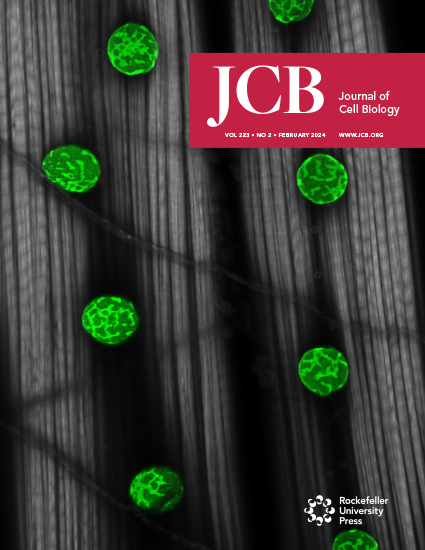TDP-43的显性阴性亚型受als连锁rna结合蛋白的调控。
IF 6.4
1区 生物学
Q1 CELL BIOLOGY
引用次数: 0
摘要
TDP-43是一种由TARDBP基因编码的rna结合蛋白(RBP),对于了解肌萎缩性侧索硬化症(ALS)和额颞叶变性等神经退行性疾病的发病机制至关重要。失调的TDP-43导致运动神经元的损失,强调了对适当表达水平的需求。在这里,我们在多个TARDBP剪接变体中鉴定了一个显性阴性异构体,并使用开发的针对其翻译产物的抗体验证了其内源性表达。此外,我们发现与als相关的rbp调节其表达:hnRNP K促进其剪接和表达,而hnRNP A1和FUS通过不同的机制抑制这些过程。hnRNP A1抑制hnRNP K介导的剪接,FUS通过其翻译抑制和hnRNP K抑制来抑制显性阴性异构体。值得注意的是,als突变的FUS削弱了这种调节机制,导致hnRNP K和显性阴性亚型的抑制受损。我们的研究结果表明,涉及ALS相关rbp的调控网络控制着TDP-43亚型的表达,并为该网络的破坏如何促进ALS发病机制提供了新的见解。本文章由计算机程序翻译,如有差异,请以英文原文为准。
Dominant-negative isoform of TDP-43 is regulated by ALS-linked RNA-binding proteins.
TDP-43, an RNA-binding protein (RBP) encoded by the TARDBP gene, is crucial for understanding the pathogenesis of neurodegenerative diseases like amyotrophic lateral sclerosis (ALS) and frontotemporal lobar degeneration. Dysregulated TDP-43 causes motor neuron loss, highlighting the need for proper expression levels. Here, we identify a dominant-negative isoform among the multiple TARDBP splicing variants and validate its endogenous expression using a developed antibody against its translated product. Furthermore, we revealed that ALS-associated RBPs regulate its expression: hnRNP K promotes its splicing and expression, while hnRNP A1 and FUS suppress these processes through distinct mechanisms. hnRNP A1 inhibits hnRNP K-mediated splicing, and FUS represses the dominant-negative isoform through both its translational inhibition and hnRNP K suppression. Notably, ALS-mutant FUS weakens this regulatory mechanism, leading to impaired repression of hnRNP K and the dominant-negative isoform. Our findings suggest a regulatory network involving ALS-linked RBPs that govern TDP-43 isoform expression and provide new insights into how disruptions in this network contribute to ALS pathogenesis.
求助全文
通过发布文献求助,成功后即可免费获取论文全文。
去求助
来源期刊

Journal of Cell Biology
生物-细胞生物学
CiteScore
12.60
自引率
2.60%
发文量
213
审稿时长
1 months
期刊介绍:
The Journal of Cell Biology (JCB) is a comprehensive journal dedicated to publishing original discoveries across all realms of cell biology. We invite papers presenting novel cellular or molecular advancements in various domains of basic cell biology, along with applied cell biology research in diverse systems such as immunology, neurobiology, metabolism, virology, developmental biology, and plant biology. We enthusiastically welcome submissions showcasing significant findings of interest to cell biologists, irrespective of the experimental approach.
 求助内容:
求助内容: 应助结果提醒方式:
应助结果提醒方式:


